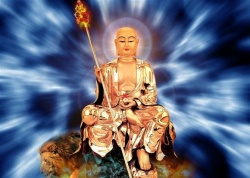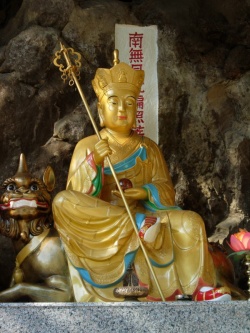Mythology
The term mythology can refer either to a body or collection of myths (a mythos, e.g., Inca mythology) or to the study of myths (e.g., comparative mythology). In folkloristics, a myth is a sacred narrative usually explaining how the world or humankind came to be in its present form, although, in a very broad sense, the word can refer to any traditional story. Bruce Lincoln defines myth as "ideology in narrative form". Myths may arise as either truthful depictions or overelaborated accounts of historical events, as allegory for or personification of natural phenomena, or as an explanation of ritual. They are transmitted to convey religious or idealized experience, to establish behavioral models, and to teach.
Early rival classifications of Greek mythos by Euhemerus, Plato's Phaedrus, and Sallustius were developed by the neoplatonists and revived by Renaissance mythographers as in the Theologia mythologica (1532). Nineteenth-century comparative mythology reinterpreted myth as evolution toward science (E. B. Tylor), "disease of language" (Max Müller), or misinterpretation of magical ritual (James Frazer). Later interpretations rejected opposition between myth and science, such as Jungian archetypes, Joseph Campbell's "metaphor of spiritual potentiality", or Lévi-Strauss's fixed mental architecture. Tension between Campbell's comparative search for monomyth or Ur-myth and anthropological mythologists' skepticism of universal origin has marked the 20th century. Further, modern mythopoeia such as fantasy novels, manga, and urban legend, with many competing artificial mythoi acknowledged as fiction, supports the idea of myth as ongoing social practice.
The main characters in myths are usually gods, supernatural heroes and humans. As sacred stories, myths are often endorsed by rulers and priests and closely linked to religion or spirituality. In the society in which it is told, a myth is usually regarded as a true account of the remote past. In fact, many societies have two categories of traditional narrative, "true stories" or myths, and "false stories" or fables. Creation myths generally take place in a primordial age, when the world had not yet achieved its current form, and explain how the world gained its current form and how customs, institutions and taboos were established.
The term "mythology" can refer either to the study of myths or to a body or collection of myths. For example, landscape mythology is the study of landscape features in terms of totemistic mythology, whereas Hittite mythology is the body of myths of the Hittites. In folkloristics, a "myth" is a sacred narrative usually explaining how the world or humankind came to be in its present form, "a story that serves to define the fundamental worldview of a culture by explaining aspects of the natural world and delineating the psychological and social practices and ideals of a society". Many scholars in other fields use the term "myth" in somewhat different ways; in a very broad sense, the word can refer to any traditional story or, in casual use, a popular misconception or imaginary entity. Because the folkloristic meaning of "myth" is often confused with this more pejorative usage, the original unambiguous term "mythos" may be a better word to distinguish the positive definition from the negative.
Closely related to myth are legend and folktale. Myths, legends, and folktales are different types of traditional story. Unlike mythos, folktales can be set in any time and any place, and they are not considered true or sacred by the societies that tell them. Like mythos, legends are stories that are traditionally considered true, but are set in a more recent time, when the world was much as it is today. Legends generally feature humans as their main characters, whereas myths generally focus on superhuman characters.
The distinction between myth, legend, and folktale is meant simply as a useful tool for grouping traditional stories. In many cultures, it is hard to draw a sharp line between myths and legends. Instead of dividing their traditional stories into myths, legends, and folktales, some cultures divide them into two categories, one that roughly corresponds to folktales, and one that combines myths and legends. Even myths and folktales are not completely distinct. A story may be considered true (and therefore a mythos) in one society, but considered fictional (and therefore a folktale) in another society. In fact, when a myth loses its status as part of a religious system, it often takes on traits more typical of folktales, with its formerly divine characters reinterpreted as human heroes, giants, or fairies.
Myth, legend, and folktale are only a few of the categories of traditional stories. Other categories include anecdotes and some kinds of jokes. Traditional stories, in turn, are only one category within folklore, which also includes items such as gestures, costumes, and music.

